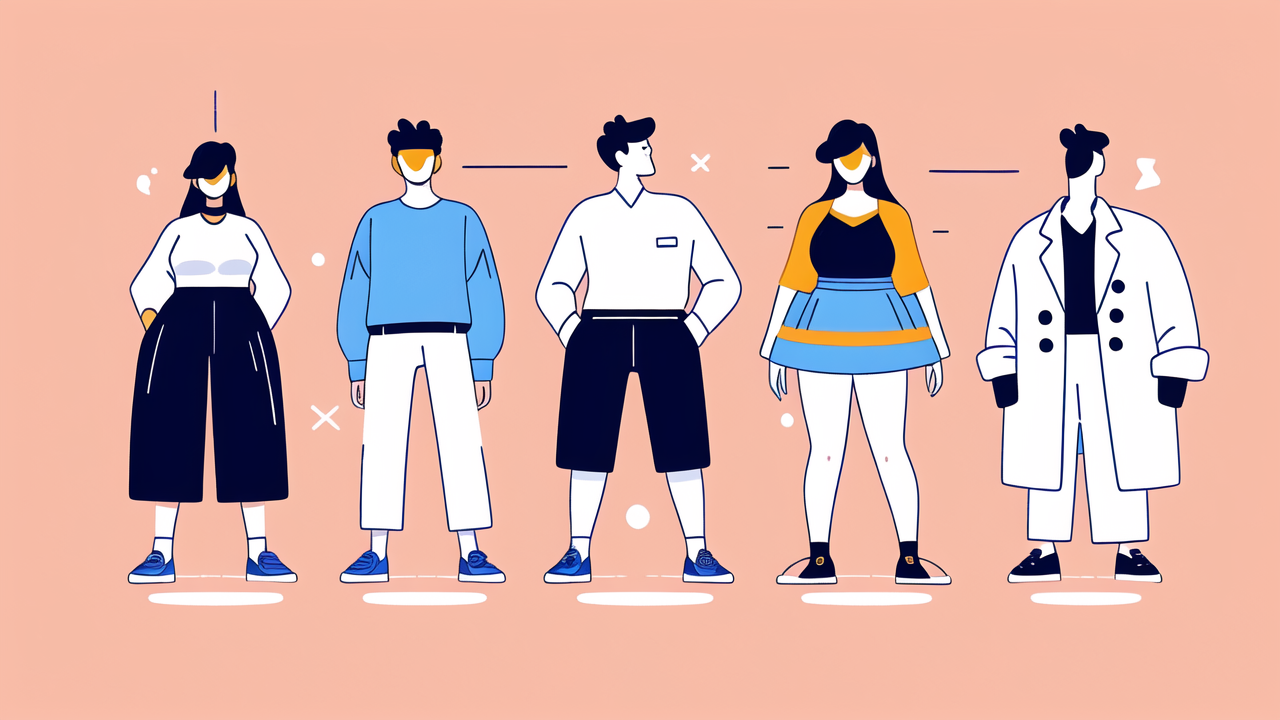Understanding the Fusion of Fashion and Technology
The Evolution of Wearable Tech
Wearable tech has come a long way since its early days. It started with bulky devices that stood out. Now, we have sleek gadgets that blend in with our clothes. The first activity trackers were simple step counters. Today's trackers can monitor heart rate, sleep, and more. They've become smaller and more stylish over time. Smartwatches have evolved from clunky gadgets to fashion statements. They now come in various styles to suit different tastes. The goal is to make tech that's both useful and good-looking.

Why Integration Matters
Integrating tech into fashion is crucial for widespread adoption. People want devices that work well and look good. When tech blends with style, it becomes part of our daily lives. This integration makes us more likely to use these devices regularly. It also helps tech companies reach a wider audience. Fashion-forward wearables appeal to those who care about their looks. They also attract tech enthusiasts who want functional gadgets. The result is a product that serves multiple needs and desires.
The Impact on Consumer Behavior
Wearable tech is changing how we shop and dress. People now consider tech features when buying accessories. They look for clothes that work well with their devices. This shift affects both fashion and tech industries. Consumers expect their gadgets to complement their style. They want options that fit their personal taste. This demand drives innovation in both sectors. Companies now focus on creating products that are both smart and stylish. As a result, the line between fashion and tech continues to blur.
Key Considerations for Wearable Tech in the Fashion Industry
Design Principles for Wearable Fashion Devices
When designing wearable tech, several key principles come into play:

- Comfort: Devices should be lightweight and non-intrusive.
- Durability: They must withstand daily wear and tear.
- Aesthetics: The look should align with current fashion trends.
- Functionality: Features should be useful and easy to access.
- Versatility: Designs should work with various outfits and occasions.
Designers must balance these aspects to create appealing products. They need to think about how the device will be worn and used. The goal is to make tech that feels natural as part of an outfit.
Balancing Aesthetics and Usability
Finding the right balance between looks and function is crucial. A device may look great but fail if it's hard to use. On the other hand, a highly functional but unattractive device won't appeal to fashion-conscious users. Designers must consider the user interface and how it fits with the overall design. They need to ensure that buttons or touchscreens are easy to access. At the same time, these elements shouldn't detract from the device's appearance. It's a delicate balance that requires constant innovation and user feedback.
Legal and Ethical Implications
As wearable tech becomes more integrated into fashion, new legal and ethical issues arise. Privacy is a major concern. These devices collect a lot of personal data. Companies must ensure this data is protected and used responsibly. There are also questions about intellectual property. Who owns the designs that combine tech and fashion? Another issue is the environmental impact. As tech becomes part of clothing, it affects how we dispose of old garments. These challenges require ongoing dialogue between tech companies, fashion brands, and lawmakers.
The Future of Wearable Tech in the United States Market
Upcoming Trends in Fashion Tech
The future of wearable tech in fashion looks exciting. We can expect to see more seamless integration of tech into clothing. Smart fabrics that can change color or pattern are on the horizon. Augmented reality (AR) glasses may become as common as regular eyewear. We might see jewelry that doubles as health monitors or payment devices. The focus will be on making tech invisible yet highly functional. Energy harvesting from body heat or movement could power these devices. This would solve the problem of battery life, a current limitation in wearable tech.

The Role of Wearable Tech in Personalized Fashion
Wearable tech is set to play a big role in personalized fashion. Devices could suggest outfits based on the weather or your schedule. They might adjust your clothing's temperature or fit for optimal comfort. AR could let you virtually try on clothes before buying them. Customization will reach new levels with tech-enabled fashion. Imagine shoes that change color to match your outfit, or jackets that display customizable patterns. This blend of tech and fashion will offer unparalleled personal expression.
Predicting Consumer Adoption and Market Growth
The U.S. market for wearable tech in fashion is poised for significant growth. As devices become more stylish and useful, adoption rates will likely increase. Young consumers, in particular, are expected to drive this trend. They are often early adopters of both fashion and tech. The healthcare sector may also boost growth, as more people use wearables to monitor their health. Market analysts predict steady growth in this sector over the next decade. However, success will depend on continued innovation and addressing consumer concerns. Privacy, durability, and ease of use will remain key factors in driving adoption.
In conclusion, the integration of wearable tech into fashion is more than a trend. It's a shift in how we think about clothing and accessories. As technology becomes more seamless and stylish, it will become an integral part of our wardrobes. The future of fashion is not just about looks, but also about function and personal data. This exciting fusion opens up new possibilities for self-expression and convenience. It challenges designers, tech companies, and consumers to rethink what we wear and why. The journey of wearable tech in fashion is just beginning, and the potential is limitless.




Leave a comment
This site is protected by hCaptcha and the hCaptcha Privacy Policy and Terms of Service apply.